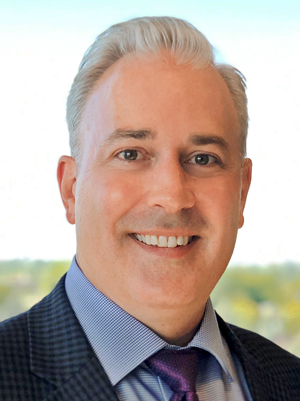 Adrian Wengert
Adrian Wengert
Vice President, Supply Chain & Procurement
St. Luke’s Health System
Boise, Idaho
About Adrian Wengert:
Adrian Wengert has supply chain in his blood. His grandmother managed supplies at a hospital in Twin Falls, Idaho, and his father managed inventory in a military warehouse. His son, Adrian, spent many weekends in that warehouse. “He’d hand me a broom and tell me that keeping the floor clean is good warehouse etiquette,” says Wengert, who grew up in and around Boise, Idaho.
His first job was working in a distribution warehouse at age 18. He spent 10 years in non-healthcare supply chain, leading distribution, operations and inventory management before transitioning into healthcare as logistics manager at Saint Alphonsus Regional Medical Center (in Boise) in 2003, for whom he ultimately served as director of supply chain. He joined Saint Luke’s Health System in 2014.
As vice president of supply chain and procurement, Wengert provides strategy, direction and oversight for all category management, strategic sourcing, value analysis, contracting, capital project management, data/analytics, purchasing, operations, inventory, logistics and program management initiatives. His team manages $600 million in non-labor supply spend.
“Growing up, I spent a lot of time stocking shelves and understanding supply chain principles across industries,” he says. “But healthcare supply chain called to me, specifically because it gave me a chance to influence the community that I, my family and friends live and work in. There is a higher calling in healthcare that drives immense internal satisfaction, even as challenging and complex as it is.”
About Saint Luke’s Health System:
With a 116-year-old history in Idaho, Saint Luke’s has eight medical centers and 200-plus clinics.
Most challenging/rewarding project in the past 12-18 months:
“We completely overhauled the supply chain department – added 17 FTEs; deployed category management; and changed GPOs, distributors and wholesaler, which put $60 million in savings to the bottom line for our health system. We recognized that category management would provide a structured approach to supply spend, purchased services, IT and more. It would allow us to gain insights and drive alignment with our stakeholders. We created three categories, each with a director and managers: clinical, non-clinical/IT, and purchased services.” The approach helped the clinical team reduce the number of suppliers of total joint implants from 15 to three. “We approached the surgeons with data, were able to help align their need clinically, and asked for their help standardizing.”
Looking forward to:
“We are completing the feasibility study to build a consolidated service center to improve cost, quality and our capabilities.”
How are you better at practicing your profession today than you were 5-10 years ago?
“To be a great supply chain practitioner, you need to be well-versed in process improvement, project management and data analysis. To be a great servant leader, you need to use influence and develop meaningful relationships to build trust and sustain results. I believe I’ve been able to accomplish both, which is a powerful combination. I support my employees in continuing their education and give them many opportunities to build their skills and ultimately, their careers.
“My mentor, Ed Hisscock, was instrumental in teaching and guiding me to become who I am today and for that, I am extremely grateful.” (Wengert reported to Hisscock for a time at St. Alphonsus. Today, Hisscock is senior vice president of supply chain management at Trinity Health in Livonia, Michigan.)
What are the challenges or opportunities facing the next generation of supply chain executives?
“We have a talent shortage for supply chain professionals in healthcare,” says Wengert, who serves as a guest presenter on healthcare supply chain at Boise State University. “There simply aren’t enough dedicated tracks in our universities for healthcare-specific supply chain development. Supply and demand forces will affect salaries and talent, and not-for-profit health systems will have difficulty paying market rates when the competition for these professionals across industry is high. We should be using the same strategies being deployed to address the nursing shortages, which would include targeting feeder schools, growing programs and tracks, offering incentives and providing formalized career growth opportunities.”
